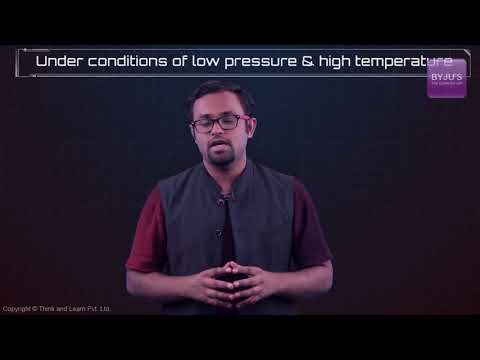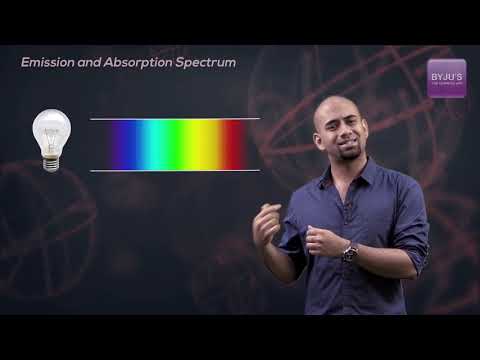What is UV-VIS Spectroscopy?
Ultraviolet-visible spectroscopy or ultraviolet-visible spectrophotometry (UV-Vis or UV/Vis) refers to absorption spectroscopy or reflectance spectroscopy in the ultraviolet-visible spectral region. Ultraviolet-visible (UV-VIS) spectroscopy is an analytical method that can measure the analyte quantity depending on the amount of light received by the analyte.
Table of Contents
- Recommended Videos
- Ultraviolet-Visible Spectrophotometer
- UV-VIS Spectroscopy Theory
- Applications of UV VIS Spectroscopy
- Frequently Asked Questions on UV VIS Spectroscopy
Recommended Videos
Characteristics of UV, IR and Visible light

Emission and Absorption Spectrum

Ultraviolet-Visible Spectrophotometer
Ultraviolet/Visible area (UV-Vis) measurements span wavelengths from around 200 nm to 800 nm. The absorption by a molecule of ultraviolet or visible radiation results in transitions between the molecule’s electrical energy levels. The optical and electronic properties of different materials, such as films, powders, monolithic solids, and liquids, are suitable for characterization.
UV-vis spectroscopy is a cost-effective, simple, versatile, non-destructive, analytical technique suitable for a large spectrum of organic compounds and some inorganic species. As a function of wavelength, UV-vis spectrophotometers measure the absorption or transmission of light that passes through a medium.
In order to classify and measure the concentration of substances in liquid streams, high performance liquid chromatography and ultra-high performance liquid chromatography incorporate UV-vis detectors. It allows the detection of all animals by integrating these techniques with mass spectrometry.
UV-VIS Spectroscopy Theory
When the interaction between incident radiation and the electron cloud in a chromophore results in an electronic transition involving the promotion of one or more of the outer shell or the bonding electrons from a ground state into a higher energy state, ultraviolet-visible (UV-Vis) spectra are derived.
Generally, the UV and visible spectral bands of substances are large. And may not exhibit a high degree of compound recognition accuracy. Nonetheless, they are sufficient for quantitative assays and are useful as an alternate means of detection for several substances. The radiation from typical hot solids consists of several wavelengths and depends primarily on the temperature of the solid and is predictable from the principle of chance, the energy released at each given wavelength.
More recently, using a version of this-the tungsten-halogen lamp-has become standard practice. Radiation is transmitted deep into the UV zone through the quartz envelope. The most popular source is the deuterium lamp for the UV region itself, and a UV-Visible spectrometer would normally have all types of lamps to fill the whole wavelength spectrum.
Applications of UV-VIS Spectroscopy
In research, ultraviolet/visible spectroscopy is used more commonly than in detection. Through first reacting the sample to bring the metal into solution as an ion, the trace metal content of an alloy, such as manganese in steel, can be determined.
A common technique for quantitative analysis of analytes in QA/QC, analytical research, and government regulatory laboratories is UV-Visible spectrophotometry. The fundamentals of the approach are learned in school, such as Beer’s Law. UV-Visible Mid-range to Upper-end Spectrophotometers are typically used in research laboratories, including university and industrial laboratories.
The ion is then complexed or made to react so that it can be measured in a shape, such as manganese as the manganate(VII) ion. When the spectrum is registered, the absorbance is the most valuable bit of information since the concentration of the solution can be determined if the absorption coefficient of the chromophore is known and thus the mass of the metal in the sample.
Frequently Asked Questions on UV-VIS Spectroscopy
Why is UV spectroscopy used in pharmaceutical analysis?
UV spectrophotometers measure the visible regions of ultraviolet light and can provide valuable information, as well as detect any impurities, about the levels of active ingredients present in pharmaceutical compounds.
What are the applications of spectrophotometry?
In different fields, such as astronomy, molecular biology, chemistry, and biochemistry, spectrophotometers are commonly used. It has some specific applications include measuring the concentration of substances such as protein, DNA or RNA, bacterial cell formation, and enzymatic reactions.
What is the range of UV spectroscopy?
UV-Vis is also considered a general procedure since in the UV-visible wavelength spectrum, most molecules absorb light. The UV frequency is between 100 and 400 nm, and the visible spectrum is between 400 and 700 nm.
Which lamp is used in UV spectroscopy?
Light with a wavelength range between 190 nm and 800 nm is radiated through the cuvette using a spectrometer, and absorption spectra are recorded. It is possible to use different broadband UV-Vis light sources. For the wavelength calibration or detection of mercury, mercury lamps that emit only a single line spectrum are often used.
What is the IR principle?
The principle of IR spectroscopy utilises the idea that molecules appear to absorb unique light frequencies that are typical of the molecules’ corresponding structure. The energies depend on the form of the molecular surfaces, the vibronic coupling associated with them, and the mass corresponding to the atoms.
What is UV -VIS spectroscopy and how does it work?
UV-Vis is a quick, convenient, and inexpensive way of determining the solution concentration of an analyte. In UV-Vis, a beam travels through a solution in a cuvette with a wavelength ranging between 180 and 1100 nm. The sample absorbs this UV or visible radiation in the cuvette.

Comments